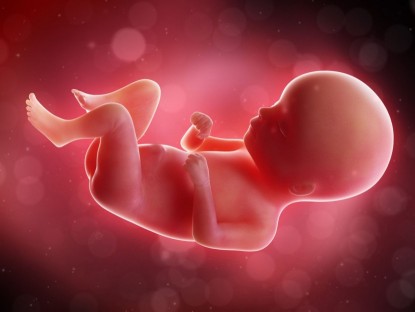Baby is about 6 inches from the top of her head to her bottom, and she is almost half a pound which equates to something about the size of a mango. Her newfound size is what will help you feel her little kicks and turns. Your baby will soon weigh more than the placenta, but she still doesn't have much body fat, nor does she resemble a newborn at this point.
Your baby is hard at work growing strong and healthy, including developing her heart, brain, and the growth of her five senses. The baby's heartbeat will be stronger now and almost twice as fast as your own when you hear it using the Doppler. Her brain will continue to develop the areas that specialize in her sense of smell, taste, sight, vision, and touch. These senses will encourage her to interact with her surroundings as limited as they might be in the womb. She will start to seek out items to grab (like the umbilical cord) to facilitate the touch sense; she is beginning to hear things inside the womb and will be able to taste the amniotic fluid once she starts to ingest it in the coming weeks. These early experiences will help her develop neurons and connections in the brain that assess sensory experiences.
As if the baby's systems weren't working hard enough, her arms and legs are also growing and are now proportional to the rest of her body. Calcium is being deposited in her cartilage bones to harden them into the bone structures we find familiar. Neurons now connect her brain with her muscles, and all of the advancements in her system give her more control over her limb movements.
One of the more prominent things happening this week is the development of vernix caseosa on the baby's skin; vernix is the Latin word for varnish, while “caseosa” means cheese. While the covering isn't varnish or cheese, it does resemble a greasy white coating of cheese. It comprises dead skin cells, hair, and oil from the baby's glands. This coating is designed to help regulate the baby's temperate and protect her delicate skin from the amniotic fluid she continually bathes. The vernix helps the skin stay supple instead of overly wrinkled like you would experience spending a prolonged period submerged in water. Most of the vernix will be gone before childbirth, but if the baby is born early, you might get a glimpse of the coating that has been protecting your baby during the second half of your pregnancy.
Reference Sources
- American Association of Pregnancy - Week 19
- Mayo Clinic - Pregnancy Week by Week
- American College of Gynecology and Obstetrics - How your fetus develops




